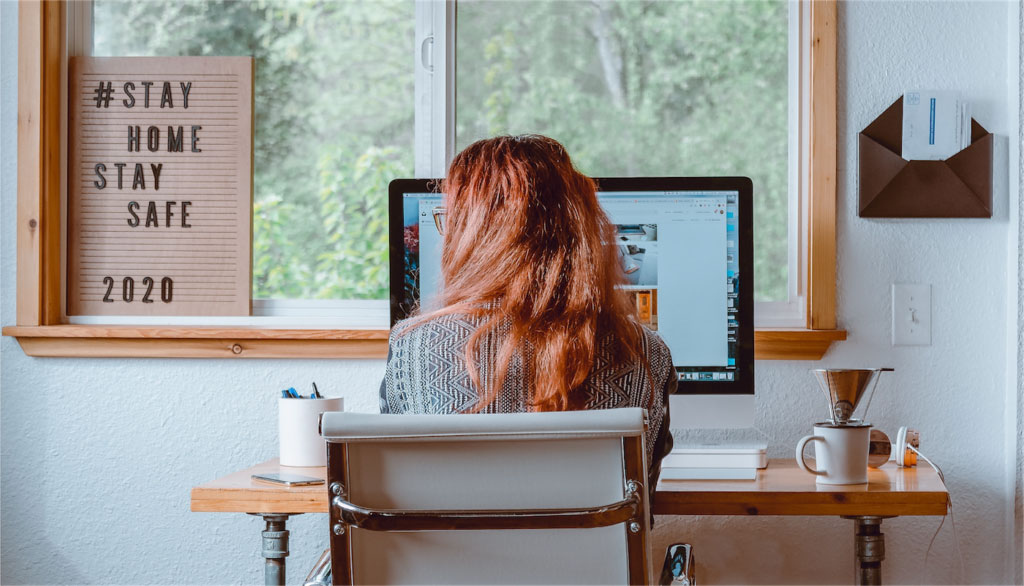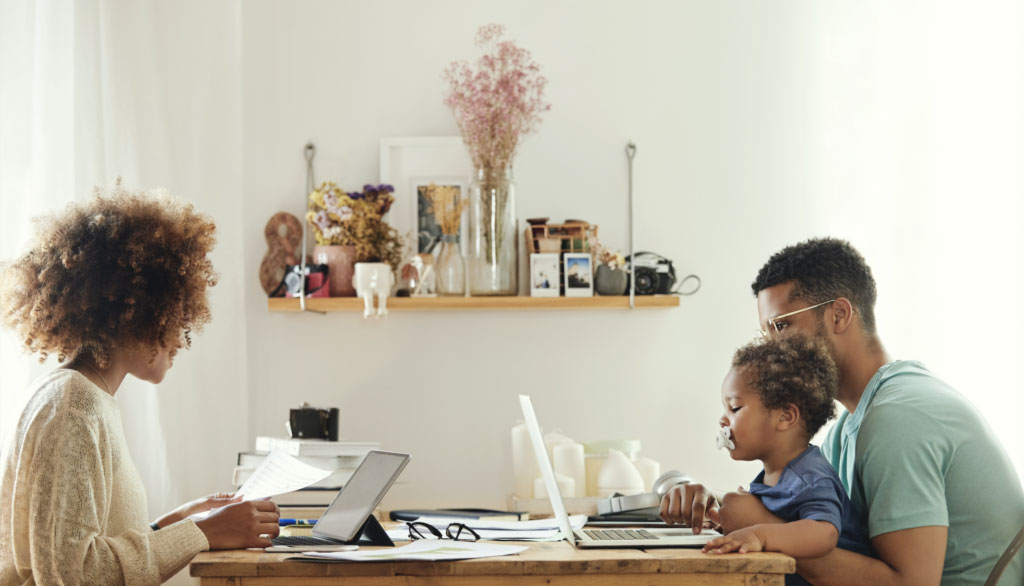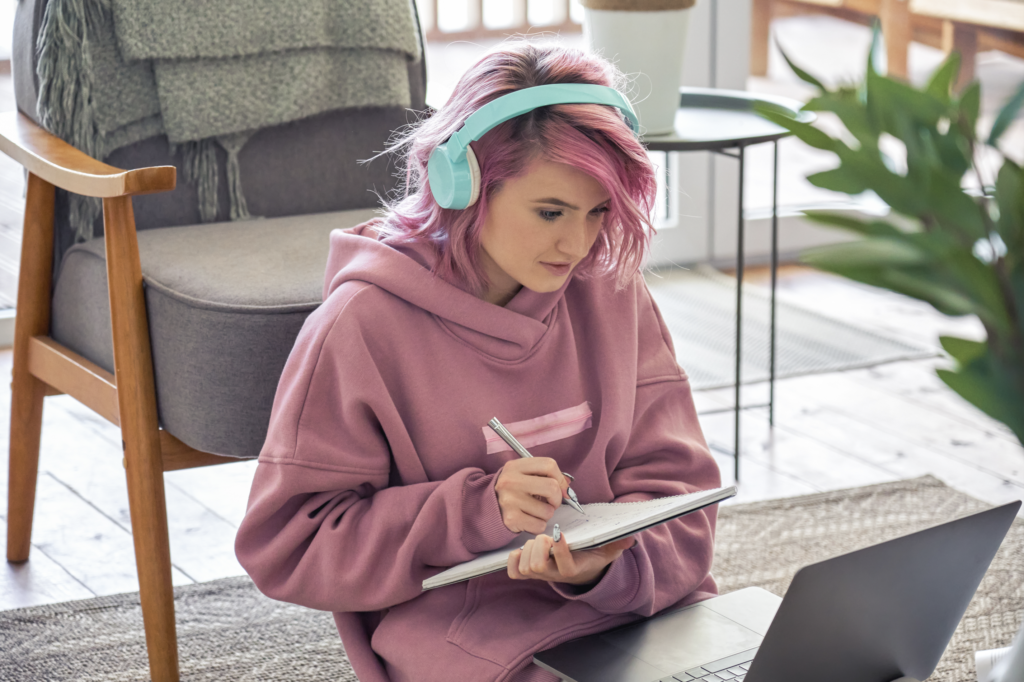COVID-19
How COVID-19 Revolutionized the Way People Live Every Day

Article at a Glance:
- COVID-19 turned 2020 upside down and disrupted every aspect of our lives.
- How we worked, interacted with others, slept, and stayed healthy were just some of the biggest challenges we faced amidst lockdowns and social distancing.
- Government-enforced lockdowns prompted an increase in remote working as well as online education, which subsequently led to a significant increase in screen time.
- More time at home has also burred the lines between work and personal life.
- Globally, there has been a rise in insomnia due to stress and anxiety around COVID-19.
- Fortunately, there are ways to make transitioning to remote work and education; there are also simple tools you can use to make your time at home comfortable and conducive to your wellbeing.
This time last year, “quarantining,” “mask mandates” and “social distancing” would have felt like distant concepts. However, they have become deeply engrained in our everyday language over the past year as the coronavirus (COVID-19) pandemic continues to impact all aspects of our lives — namely how we work, interact with others, and sleep. And while 2020 has been a unique and challenging year for many, key learnings from our pandemic experiences may help prepare us for a healthier, happier 2021 and beyond.

COVID-19 Has Led to a New “Working-From-Home Economy”
Prior to the coronavirus outbreak, only about 7% of U.S. workers regularly worked from home.(1) This past spring, government-mandated lockdowns forced office workers into the world’s largest remote work experiment, where telework at scale wasn’t a privilege, but a necessity.(2) Even after quarantines have been lifted, approximately 42% of the U.S. labor force now works from home full-time — almost twice as many employees that are still working in an office.(3)
With more remote work comes more screen time than ever before. Millions of employees now work together virtually, while being physically distant, with computers at their fingertips, telecommunication services in their homes, and a host of digital tools at their disposal to communicate, learn, work, and share.(4) It’s worth noting that when you’re at home, you don’t get those natural breaks that you’d otherwise experience while working in an office – like commuting, in-person meetings, and coffee or lunch breaks with colleagues. Many remote workers have also had to adapt to using a variety of video communication tools from the comfort of home – on couches, in cramped kitchens, and even cars to help hide the sound of child tantrums and barking dogs in the background. It has been a transition period for sure, but COVID-19 has forever changed the way businesses and individuals connect and communicate.

COVID-19 Also Led to a Rise in Online Learning
At the height of the COVID lockdown, more than 160 countries had mandated school closures for at least 1.5 billion children and youth.(5) Like office workers, students of all ages, as well as teachers, were forced into unchartered territory. Overnight, they had to pivot from face-to-face Instructor-Led Training (ILT) to eLearning, and rethink how to offer learning experiences that are engaging, collaborative, and interactive.
Naturally, the amount of time that children spend on screens has risen dramatically, and with mixed results. While some children have learned to cope with online classes, others have been overwhelmed with fatigue, headaches, stress, and digital eye strain in a way they didn’t when classes were face-to-face. Another challenge at hand for many students is striking a healthy working/life balance. If they are sharing their home space with other siblings, for example, or simply browsing through other tabs on their computer, endless distractions can deter students’ productivity with remote learning.
With all of that said, online learning does have benefits:
- It gives teachers a more efficient way to deliver lessons to students beyond traditional textbooks (via various tools such as videos, podcasts, PDFs, and other digital resources)
- It makes learning materials more accessible and allows students to participate at the time and in the location of their choice.
- Without a doubt, online education is far more affordable than face-to-face learning. This can, in turn, help improve student attendance.
- It can suit a variety of different learning styles (e.g., visual versus audio learning).
While the adoption of digital learning has historically been slow, COVID-19 has helped move the need on eLearning technology acceptance, for students and teachers alike.

COVID-19 Caused a Second Pandemic of Insomnia
Insomnia was a common problem before COVID-19, but now there is a new term to be aware of: coronasomnia. The pandemic has created unprecedented changes in our lives – including increases in stress and anxiety, worries about health, social isolation, employment and finances, as well as the challenge of combining work and family obligations.(6) All of these things can contribute to insomnia, which unfortunately perpetuates itself. “Coronasomnia” is essentially a second pandemic related to the inability to fall and stay asleep, stemming from impacts of the coronavirus.
A study done at the start of the worldwide crisis found that there was a 37% increase in the rates of clinical insomnia from pre-COVID to the peak of the crisis.
Broken routines fuel coronasomnia. The restrictions associated with social distancing have disrupted daily routines that typically help keep sleep-wake rhythms in synchrony with the day–night cycles. Simple tasks that are typically performed at specific times, such as waking up in the morning, showing up at work, eating meals, and doing leisure activities, are no longer happening according to a set schedule. Your circadian rhythms regulate every cell in your body, and subsequently affect your digestion, immune health, sleep, and more. If your master clock gets disrupted, everything else breaks down.

Tips for Navigating Everyday Life in a World With COVID-19
If you’re feeling overwhelmed by all COVID-19’s ripple effects, you’re not alone. The good news is that change creates more room for opportunity, and there are some simple yet effective measures you can take to help make your ”new normal” more comfortable while supporting your health. Here are some key trends that will carry on into 2021, as well as some tips on how to cope:
People will rethink of one of the great villains of modern technology: screens.(7)
Prior to the pandemic, there was a large focus on how screen time affects mental health, sleep, and social interactions, especially among teens and children. These concerns aren’t necessarily gone, but there’s a different lens on the world we’re currently living in where many people are just trying to get by. In fact, more than 80% of Americans now have a better appreciation for technology since this pandemic has forced them to rely upon it.(8)
Heading into 2021, people will continue to use digital devices as gateways to employment, education, education, and more. If you’re worried about “digital overload”, keep this in mind: screen time is okay in moderation, and everyone’s relationship with technology is complicated. In these unprecedented times, it’s important to take on a realistic model of the world without assuming that digital devices are inherently bad.
The working-from-home economy is here to stay, and so are video calls.
As remote work becomes more permanent, telecom tools will become even more engrained in our everyday lives. This means that there may be days when you have day-long marathons of video calls and communication with colleagues via various apps. So, striking a balance between embracing technology and being mindful of screen time will be key for your health and productivity:
- Take frequent breaks to walk around and get your blood flowing.
- Go outside, get at least 20-30 minutes of natural sunlight every day to help synchronize your circadian rhythm.
- Invest in blue light blocking glasses for daytime that are specifically designed to help mitigate digital eye strain and fatigue while exposed to artificial blue light.
- Similarly, invest in nighttime eyewear that blocks the full spectrum of (blue, green, and violet) light that disrupts sleep to help promote natural melatonin production in the evenings. Prioritizing sleep at night will help you improve your cognitive function, energy, and productivity during the daytime.
Here’s another point to consider: remote work may have felt like vacation at first, but the truth is that not having a set schedule can blur the line between your personal and work life, especially if you’re balancing parenting obligations. Lack of structure can also adversely affect your circadian rhythm, which is connected to your hormones and important biological functions – like when you wake up, eat, exercise, and sleep. If you continue to regularly work from home, establishing a daily routine can help you synchronize your internal body clock with natural light/dark cycles. Accountability is key!
Online education will continue to gain traction.
Much like the labor landscape, education has changed dramatically as a direct result of COVID-19. On the surface, this transition has been uncomfortable and challenging in many ways. But one of the undeniable benefits is that online classrooms allow students to learn anytime, anywhere. Given that digital learning provides greater access to information, training, and mentoring tools across borders, eLearning is expected to continue growing so that people all over the world can take advantage of technology’s full potential.(9) It is also likely that schools will adopt hybrid models that involve some face-to-face interaction in the classroom and some remote coursework. Part of navigating the new education landscape will require figuring out which model works best for you (or your kids).
References
- https://www.weforum.org/agenda/2020/03/working-from-home-coronavirus-workers-future-of-work/
- https://time.com/5776660/coronavirus-work-from-home/
- https://news.stanford.edu/2020/06/29/snapshot-new-working-home-economy/
- https://elearningindustry.com/covid-19-disrupting-online-learning
- https://blogs.worldbank.org/voices/2020-year-review-impact-covid-19-12-charts
- https://www.ncbi.nlm.nih.gov/pmc/articles/PMC7274952/
- https://www.washingtonpost.com/technology/2020/04/09/screen-time-rethink-coronavirus/
- https://assets.ctfassets.net/0o6s67aqvwnu/jae801joriRO3NT6kT2KI/a3d281f96911fa0a95e20c5588499659/NRG-TheGreatRefresh-COVID19.pdf
- https://www.weforum.org/agenda/2020/04/coronavirus-education-global-covid19-online-digital-learning/

